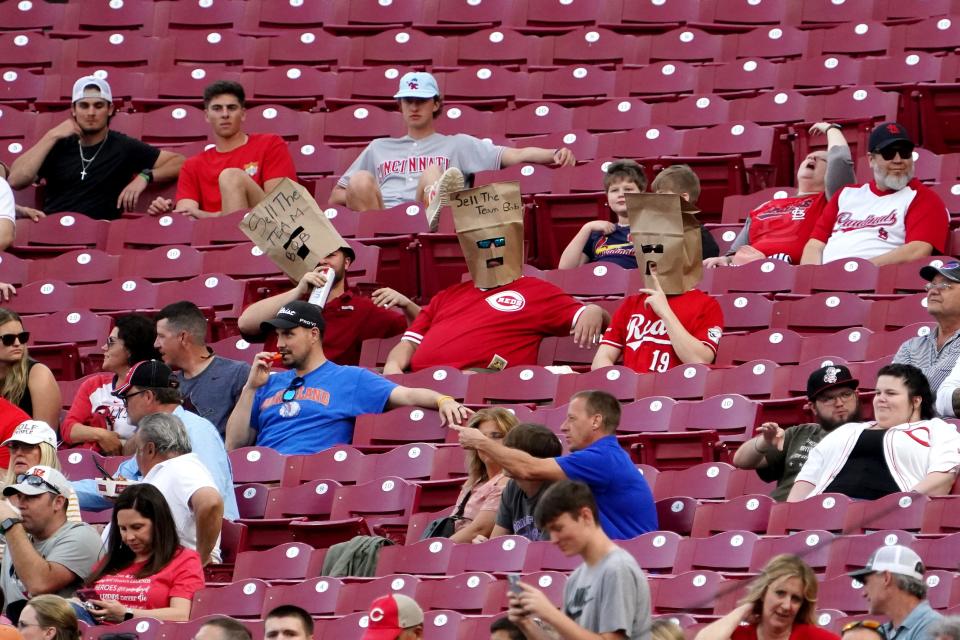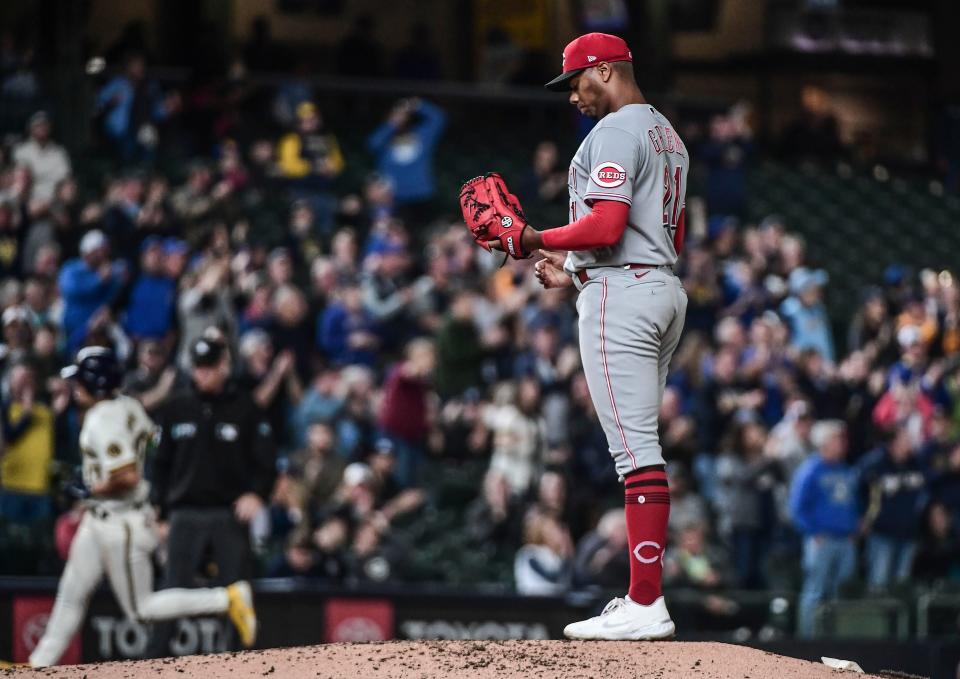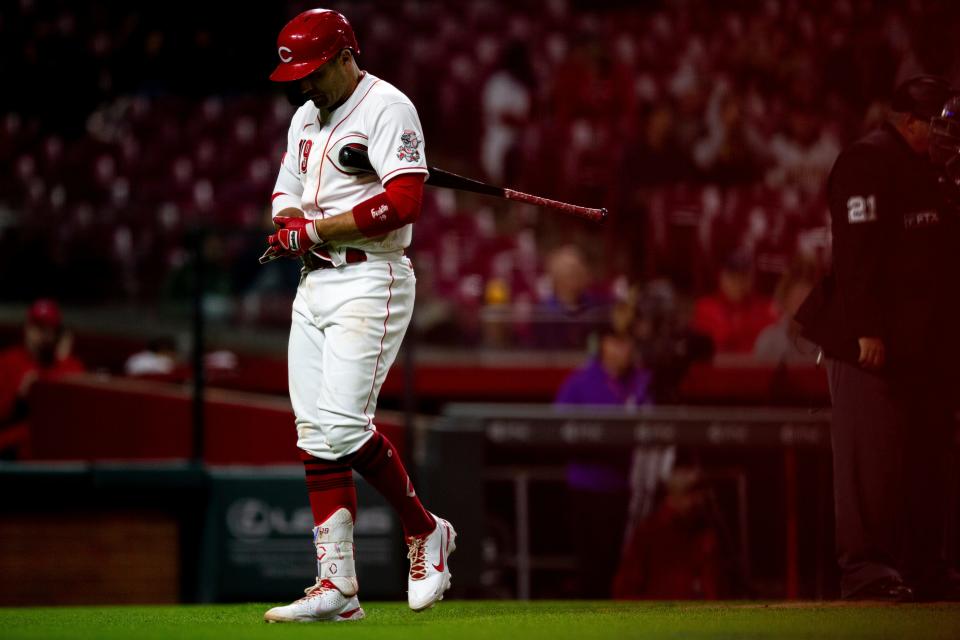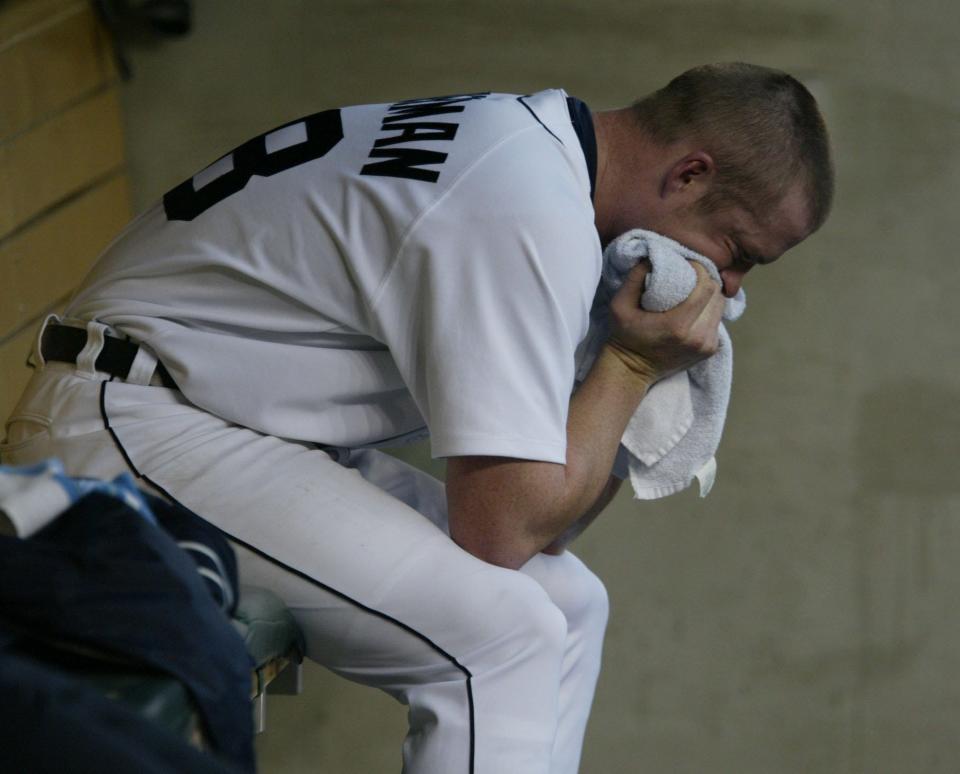How the 2022 Cincinnati Reds compare to 1988 Orioles, other worst starts in MLB history
The Cincinnati Reds are off to the worst start to a season by any MLB team in more than 30 years, losing 22 of their first 25 games.
There is a multitude of reasons for the club’s historically poor start. Ownership cut player payroll in the offseason, leading to several popular players departing in trades. There are a league-high 15 players on the Injured List, crushing depth in all areas of the roster. And the Reds just haven’t played well at all.
The Reds completed a 0-6 road trip through Colorado and Milwaukee, and they were outscored 57-20. They rank last in the Majors in ERA (6.90) and offensive on-base plus slugging percentage (.585).

SPORTS NEWSLETTER: Sign up to get daily updates sent to your inbox
Here’s a look at how the Reds compare to the other worst starts through 25 games in MLB history:
2022 Cincinnati Reds (3-22)
Offense: .203/.267/.318 slash line with 79 runs, 18 homers, 7,1% walk rate, 26.5% strikeout rate and six stolen bases in 10 attempts.
Pitching: 210 IP, 6.86 ERA, 235 H, 160 ER, 120 BB, 209 K and 1.69 WHIP.
The Reds have only one win since April 10, dropping 20 of their last 21 games. They have lost 13 consecutive road games, which is the longest road losing streak since a 0-19 stretch from July 5-Aug. 24, 1933.
How much have the Reds been outplayed? Reds pitchers have allowed 166 runs and hitters have totaled 162 hits. No National League team has ever allowed more runs than the number of hits by its offense, according to Bally Sports Ohio.

1988 Baltimore Orioles (2-23)
Offense: .211/.287/.302 with 66 runs, 13 homers, 9.0% walk rate, 15.1% strikeout rate and 14 stolen bases in 21 attempts.
Pitching: 212.2 IP, 5.59 ERA, 253 H, 132 ER, 77 BB, 118 K, 1.55 WHIP.
If Reds fans want a silver lining, this Orioles team won 87 games the following season. It had a roster filled with two Hall of Famers, Eddie Murray and Cal Ripken Jr., and future All-Star Mickey Tettleton, and Baltimore acquired rookies Curt Schilling and Brady Anderson in a trade that summer for top pitcher Mike Boddicker.
The Orioles started the season with a 0-21 record, firing manager Cal Ripken Sr. after six games. Frank Robinson replaced Ripken Sr. and the Orioles finished the season with a 54-107 record.
When Baltimore reached 0-18, Robinson received a call from President Ronald Reagan, who said he’d been accused of being a jinx after throwing the ceremonial first pitch on Opening Day.
“Frank,” Reagan said, according to Baltimore Sun reporter Tim Kurkjian, “I know what you’re going through.” Robinson responded, “Mr. President, with all due respect, you have no idea what I’m going through.”

2003 Detroit Tigers (3-22)
Offense: .183/.258/.256 with 57 runs, 11 homers, 8.4% walk rate, 19.2% strikeout rate and seven stolen bases in 19 attempts.
Pitching: 216 IP, 4.71 ERA, 242 H, 113 ER, 80 BB, 122 K and 1.49 WHIP.
The 2003 Tigers were coming off a 106-loss season and sunk even further during their 43-119 season. They reached the World Series in 2006, but there were a few key holdovers from the 2003 team, including Brandon Inge, Craig Monroe, Omar Infante Jeremy Bonderman and Jeremy Rodney. It was Alan Trammell’s first year as manager and the Tigers set an American League record in losses, dropping 100 games before September.
Current Tigers manager A.J. Hinch was a catcher on the 2003 team.

1969 Cleveland (4-21)
Offense: .205/.283/.309 with 63 runs, 18 homers, 9.4% walk rate, 16.8% strikeout rate and 12 stolen bases in 18 attempts.
Pitching: 224 IP, 5.63 ERA, 224 hits, 140 ER, 151 BB, 162 K and 1.67 WHIP.
Fresh off an 86-win year, a disastrous start sent Cleveland into a 62-99 season. It was a young starting rotation with the main starters younger than 30, but there was talent with Luis Tiant and Sam McDowell.
Ken “Hawk” Harrelson, who finished third in the AL MVP voting in 1968, thought about retiring when he was traded to Cleveland after the team’s 1-8 start.
This article originally appeared on Cincinnati Enquirer: Cincinnati Reds' 2022 start among the worst in MLB history

